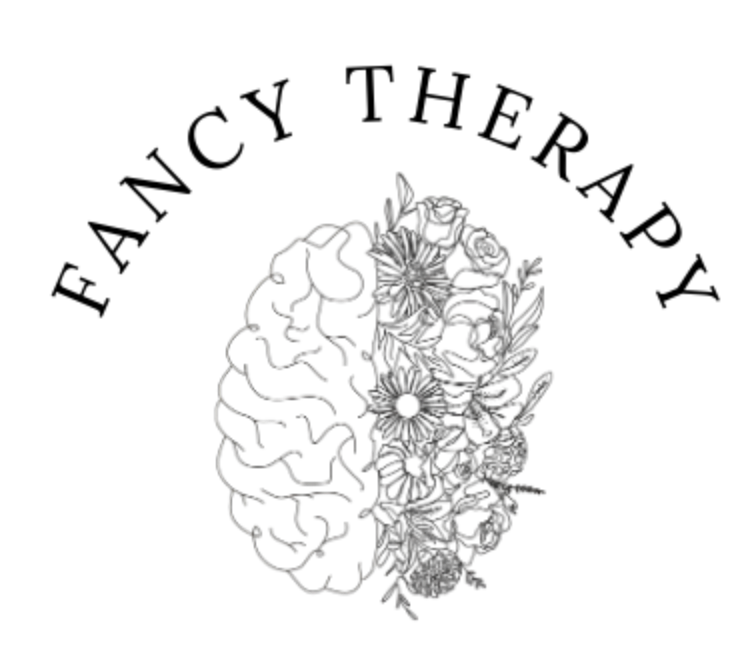The Anxiety Loop: How Your Thoughts, Body, and Habits Keep Feeding Each Other
If you’ve ever struggled with anxiety, you know how overwhelming it can be, it’s not just in your mind, but in your whole body. One moment you’re having a small, worried thought, and the next, your chest is tight, your stomach hurts, and you’re Googling symptoms or cancelling plans just to get some relief. It can feel like anxiety comes out of nowhere and completely takes over.
But anxiety doesn’t just happen to us. It follows a pattern, a loop. And once you understand how that loop works, you can start to interrupt it in small but powerful ways. The goal isn’t to end anxiety completely (it’s part of being human), but to stop it from running the show.
Step 1: It Starts With a Thought
The anxiety loop usually starts with a thought, often subtle, automatic, and barely noticeable.
Examples:
“What if I mess this up?”
“Something’s wrong with my body.”
“They’re going to judge me.”
“I can’t handle this.”
These thoughts might not sound dramatic, but they’re powerful. Your brain treats them as possible threats, and even if the threat is imagined, your body reacts like it’s real.
Step 2: Your Body Reacts
When your brain thinks you’re in danger (even emotional or social danger), your nervous system kicks in to protect you. This is the “fight, flight, or freeze” response.
You might feel:
Racing heart
Sweaty palms
Tight chest
Shaky hands
Nausea or a pit in your stomach
Trouble breathing or swallowing
Tension in your shoulders or jaw
These sensations aren’t random, they are your body getting ready to run from a lion. Except there’s no lion. There’s just a stressful email, a social interaction, or a thought that spiralled out of control.
Step 3: You React With Avoidance
Because your body feels so uncomfortable, your natural instinct is to get away from whatever triggered it. So, you might cancel plans, avoid answering messages, procrastinate, over-prepare, or scroll on your phone to distract yourself.
These are avoidant behaviours, and while they do bring short-term relief, they reinforce the anxiety in the long term.
Why? Because every time you avoid, your brain learns: “Yep, that thing was scary. Good thing we didn’t do it!” So next time, the anxiety shows up even faster and louder.
The Loop in Action
Let’s say you get invited to a gathering where you don’t know many people.
Thought: “What if I say something awkward and they think I’m weird?”
Body: Your heart races, your stomach flips, you start feeling shaky.
Behaviour: You decline the invitation and stay home.
Temporary relief: Anxiety goes down… for now.
Reinforcement: Your brain logs this as a win, “avoiding worked!”
Result: Next time a similar invite shows up, your anxiety is stronger.
And just like that, the loop keeps spinning.
So… How Do You Break the Loop?
The good news? You don’t need to “fix” everything at once. You just need to interrupt the loop, anywhere. Here are some ways to start.
1. Catch the Thought
Start by noticing your anxious thoughts. You don’t have to believe or argue with them, just get curious.
Try asking:
“What story am I telling myself right now?”
“Is this a fact, or just a fear?”
“If a friend had this thought, what would I say to them?”
Once you start noticing your patterns, they lose some of their grip. You become the observer instead of the passenger.
2. Soothe the Body
When your body is in full-alert mode, it is hard to think clearly. Try simple grounding or calming strategies to regulate your nervous system:
Take slow, deep breaths (inhale for 4 seconds, exhale for 6 seconds)
Place one hand on your chest and one on your belly
Wiggle your toes or tap your fingers rhythmically
Run your hands under warm water
Stretch or move gently
These cues tell your brain, “I’m safe,” and help bring you back into the present moment.
3. Face the Fear (Gently)
Avoidance keeps the anxiety alive. Facing your fear, even just a little, starts to retrain your brain. This is called exposure, and it works best when done in small, manageable steps.
Example:
If social anxiety keeps you isolated, your first step might be replying to a message or making eye contact with a cashier, not jumping into a party.
If health anxiety flares when you feel a sensation, your goal might be sitting with the feeling for 30 seconds before checking anything.
Each time you face the discomfort without escaping it, you send your brain new evidence: “I can do this. I didn’t fall apart. That wasn’t as bad as I thought.”
And the loop begins to loosen.
4. Celebrate the Small Wins
Every time you notice a thought, regulate your body, or choose a brave action, even a tiny one, you’re rewiring your anxiety loop. And that deserves celebration.
Did you stay in the uncomfortable moment instead of bailing? That counts.
Did you speak up even though your voice shook? That’s huge.
Did you try, even if it wasn’t perfect? That’s how growth happens.
Progress with anxiety isn’t measured in panic-free days, it’s measured in your willingness to stay present and keep going.
Final Thoughts
Anxiety loops can feel automatic and frustrating, but they’re not permanent. By understanding how your thoughts, body, and behaviours feed into each other, you start to take back control. You don’t need to silence your anxiety. You just need to stop believing it always knows best. And remember: you can interrupt the loop anywhere, anytime. One new thought. One deep breath. One small, courageous step forward.




